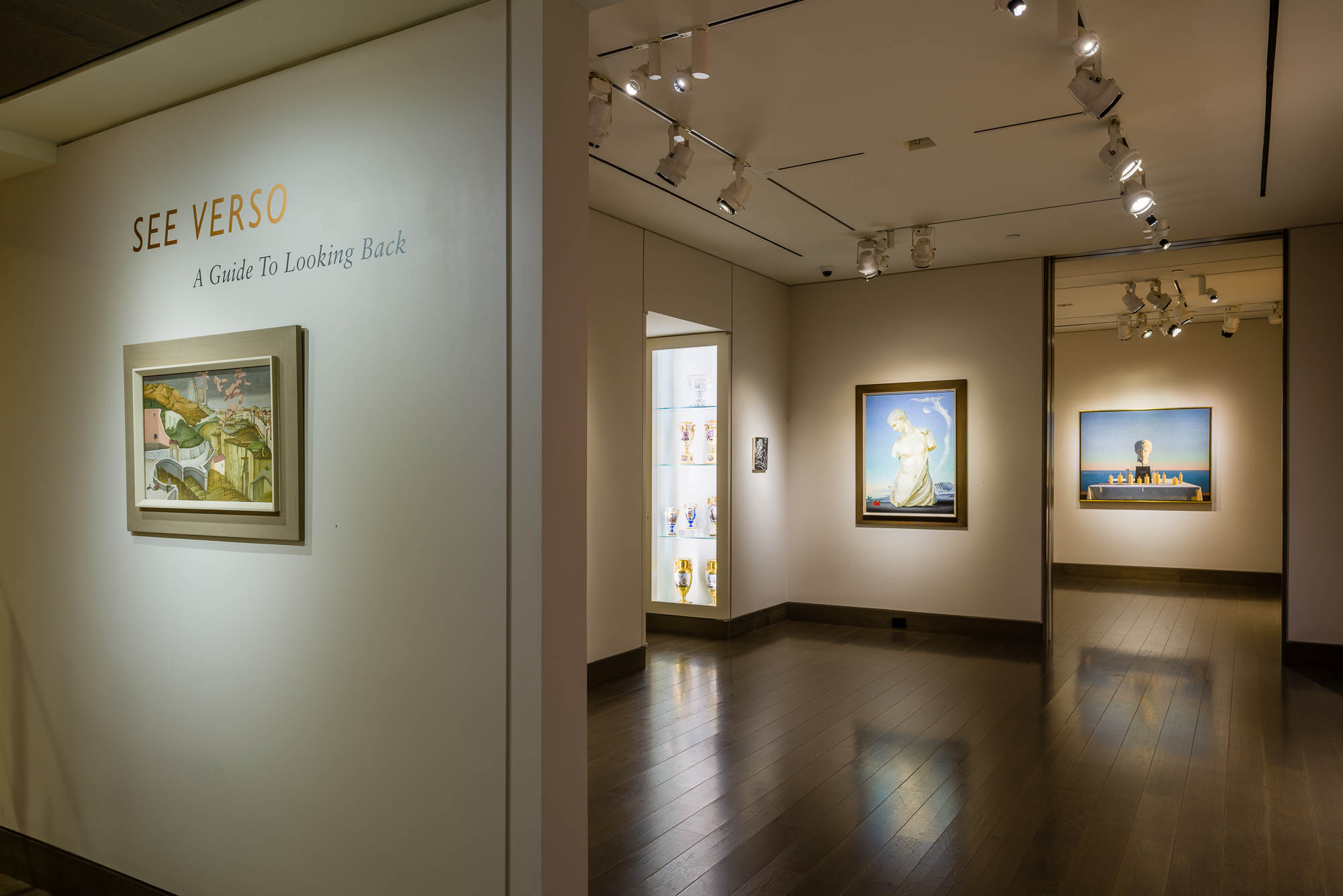PRELUDE: THE EARLY WORK OF FRANZ KLINE
April 24 – June 13, 2025
Opening reception: Thursday, April 24, 5:30 – 7:30PM
Curated by Shelley Farmer and Madeleine Hermann
Hirschl & Adler Modern is proud to present this exhibition of more than 30 paintings and works on paper by American Abstract Expressionist painter Franz Kline (1910–1962).
Today Kline is celebrated for the powerful and heroic black-and-white paintings incorporating abstract motifs and physical brushwork that debuted in his first one-person show at Charles Egan Gallery in New York in 1950. Less known, however, is the stylistic experimentation that preceded and presaged the artist’s now-iconic work. This exhibition focuses on the imagery Kline produced in the 1940s, as he developed his most influential relationships with Willem and Elaine de Kooning and other artists associated with the New York School.
The artworks all come from the collection of the artist’s dear friend and earliest patron I. David Orr (1904–1997) of Long Island, New York. From their first meeting in 1939, Orr supported Kline as he gained his footing in the New York art world. Orr purchased dozens of Kline’s works as they were completed, and commissioned portraits of himself, his wife Miriam, and daughter Sue. Remarkably, Orr acquired Kline’s work over a sustained twenty-year period and kept his collection intact. He supported his friend’s career by sponsoring solo museum shows at important institutions, which included most of the works in this exhibition.
This marks the first time that these works have been offered on the market since they were acquired by Orr eight decades ago. As a group they illustrate not only Kline’s stylistic evolution, but also the parallel evolution of Orr’s own taste as a collector. Together they speak to the seismic shift that took place in American visual arts during the 1940s and made New York the center of the art world, while offering rare insight into the artistic process and emergence of one of the most influential artists of the 20th century.















FIELD NOTES FROM AN APOCALYPSE
September 6 – 15, 2024
Opening reception: Friday, September 6, 6:30–8:30PM
Gallery hours: Saturdays, 12:00–3:00PM
Special hours: Sundays, September 8 and September 15, 12:00–3:00PM
Works by Alabel Chapin, Anna Garrity, Madeleine Hermann, and Lauren Lee
Curated by Madeleine Hermann
Stand4 Gallery is pleased to present Field Notes from an Apocalypse. Curated by Madeleine Hermann, the exhibition features a group of ultra-contemporary artists who seek to make sense of this messy world they stand to inherit. Through a variety of mediums, Alabel Chapin, Anna Garrity, Madeleine Hermann, and Lauren Lee embody their grief, joy, rage, hope, and faith, discovering that which serves them and discarding that which does not.
Chapin, Garrity, Hermann, and Lee previously collaborated as part of Barnard College’s 2023 Visual Arts Thesis cohort, presenting their work together in the 2023 exhibition BECOMING/UNBECOMING. They are no stranger to one another’s work and practices, and welcome you into their conversation.








SEE VERSO: A GUIDE TO LOOKING BACK
May 30 – July 3, 2024
Reception: June 13, 5:00 –7:00 PM
Curated by Madeleine Hermann and Eliana Silk
“See Verso” is most often seen in the registration notes for a work of art. Labels, inscriptions, and dates find themselves grouped in with this term to describe the contents found on the backs of pictures. But what does see verso mean when taken out of this literal context? It is an indication that there is something more; you must look back to produce something new. See Verso: A Guide to Looking Back showcases an eclectic group of modern and contemporary artists who look back to their art predecessors as a means of fully understanding them.
Each work in See Verso possesses a unique mythic quality. Greco-Roman classicism, the art historical canon, biblical narratives, and the natural world are adapted onto canvas and paper as allegories, symbols, and as subjects themselves. Through these references, the artists are inviting us to look to history’s so-called “end product” to examine the present, and in turn render it changeable. Perhaps these myths shift or challenge perceptions. Perhaps they heighten them. One thing is certain: they ensure that history is not left in the past.





